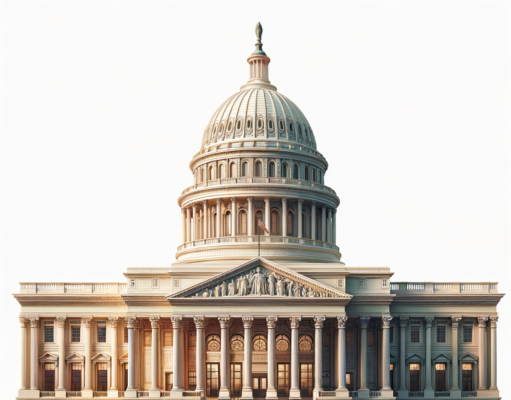Unveiling the Unexpected: Shocking Local Law Changes You Must Know!
In a rapidly evolving legal landscape, staying informed about local law changes is crucial for residents and community stakeholders alike. Recent legislative shifts have introduced a series of unexpected regulations that could significantly impact daily life, community safety, and public welfare. This article aims to shed light on these changes, their implications, and how residents can adapt to the new legal environment.
Understanding the Importance of Staying Informed About Local Law Changes
Staying informed about local law changes is essential for several reasons. First and foremost, laws govern our daily interactions and responsibilities, influencing everything from property rights to public safety. Ignorance of the law is not an acceptable defense, and individuals can face legal repercussions for failing to comply with new regulations. Furthermore, local laws often reflect the values and priorities of a community, shaping the social fabric and ensuring that residents’ needs are met. By understanding these changes, residents can better advocate for their rights and engage in informed discussions about community issues, fostering a more active and informed citizenry.
Recent Legislative Shifts: Key Local Laws That Have Taken Effect This Year
This year has seen a wave of legislative changes at the local level, with several key laws taking effect that have caught many residents off guard. Among the most significant is the new zoning regulation that allows for increased density in residential areas, aimed at addressing the housing crisis. Additionally, a revised public health ordinance mandates stricter regulations on food safety in local restaurants, reflecting heightened concerns about public health following recent outbreaks. Other notable changes include updates to noise ordinances that impose stricter penalties for violations, and new environmental regulations designed to reduce waste and promote sustainability. These shifts represent a broader trend towards adapting local governance to contemporary challenges, but they also require residents to adjust their understanding of what is permissible in their communities.
The Impact of New Regulations on Community Safety and Public Welfare
The recent changes in local laws are poised to have a profound impact on community safety and public welfare. For instance, the updated zoning regulations are expected to increase housing availability, potentially alleviating some of the pressures on the local housing market. However, this change also raises concerns about infrastructure strain and the need for enhanced public services. Similarly, the stricter food safety regulations aim to protect public health, but they may impose additional burdens on small business owners who must comply with the new standards. The noise ordinance revisions are designed to enhance quality of life by reducing disturbances, yet they may also lead to increased conflicts between neighbors. As these laws take effect, it will be crucial for community leaders to monitor their impacts and make necessary adjustments to ensure that the intended benefits are realized without unintended consequences.
Navigating the Legal Landscape: How to Adapt to Unexpected Law Changes
Adapting to unexpected law changes can be challenging, but there are several strategies residents can employ to navigate the evolving legal landscape effectively. First, it is essential to stay informed through reliable sources, such as local government websites, community newsletters, and public forums. Engaging with local advocacy groups can also provide valuable insights and support. Additionally, residents should consider attending town hall meetings or community workshops where local officials discuss new regulations and their implications. Building a network of informed neighbors can facilitate discussions and collective action, ensuring that community voices are heard. Finally, consulting with legal professionals when in doubt can help clarify the nuances of new laws and their potential impact on individual circumstances.
Expert Opinions: Local Leaders Weigh In on Recent Legal Developments
Local leaders and experts have expressed a range of opinions regarding the recent legal developments in the community. City Council members have emphasized the importance of these changes in addressing pressing issues such as housing affordability and public health. “These laws are not just regulations; they are a commitment to improving the quality of life for our residents,” stated Councilmember Jane Doe. However, some community advocates have raised concerns about the potential for gentrification and the displacement of long-term residents due to the new zoning laws. Public health officials have welcomed the food safety regulations, noting that they are essential for safeguarding community health, while also acknowledging the challenges they pose for local businesses. Overall, the dialogue among local leaders reflects a commitment to balancing progress with the needs and concerns of the community.
Resources for Residents: Where to Find Information on Local Law Changes
To help residents stay informed about local law changes, several resources are available. The city’s official website is a primary source for updates on new regulations, providing access to legislative documents, meeting minutes, and public notices. Local libraries often host informational sessions and maintain archives of legal resources. Community organizations and advocacy groups also play a vital role in disseminating information and offering workshops on navigating new laws. Additionally, social media platforms can serve as effective channels for real-time updates and discussions among residents. By leveraging these resources, individuals can ensure they remain informed and engaged in the legal processes that affect their lives.
As local laws continue to evolve, it is imperative for residents to remain vigilant and proactive in understanding these changes. By staying informed and engaged, community members can not only adapt to new regulations but also contribute to shaping a legal landscape that reflects their values and priorities. The unexpected nature of these law changes serves as a reminder of the dynamic relationship between governance and community, highlighting the importance of active citizenship in fostering a thriving society.


























































